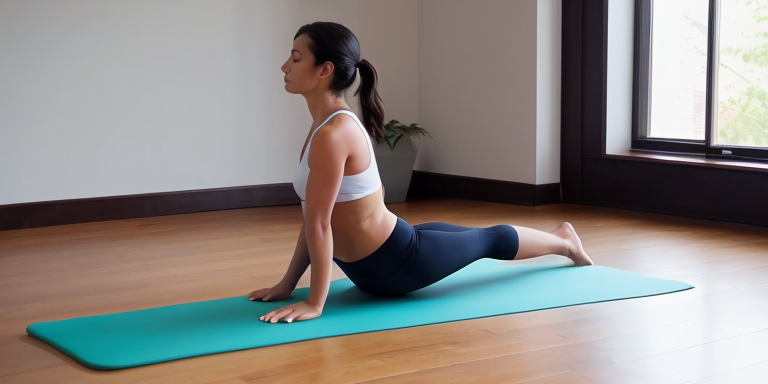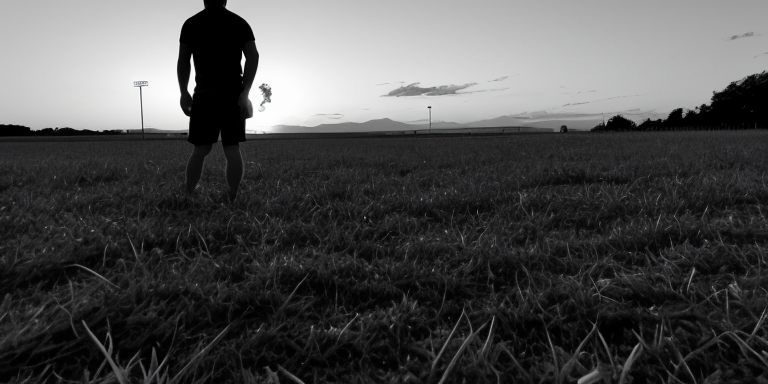Finding Calm: The Role of Yoga in Managing Anxiety
Anxiety is a common experience that can range from mild to severe. It is characterized by feelings of worry, fear, and nervousness that can be triggered by a variety of situations. While some level of anxiety is normal, excessive anxiety can interfere with daily life and lead to physical and mental health problems.
Managing anxiety is crucial for overall well-being. It can improve sleep, reduce stress, and enhance relationships. There are many ways to manage anxiety, including therapy, medication, and lifestyle changes. One increasingly popular approach is the use of yoga.
Yoga is an ancient practice that combines physical postures, breathing techniques, and meditation. It has been used for centuries to promote physical, mental, and spiritual health. In recent years, yoga has gained recognition as an effective tool for managing anxiety.
Research has shown that yoga can have a positive impact on the nervous system, which is responsible for the body’s stress response. By practicing yoga regularly, individuals can learn to regulate their stress response and reduce anxiety symptoms.
In addition to its physiological effects, yoga can also provide a sense of calm and relaxation. It encourages mindfulness and self-awareness, which can help individuals better understand and manage their anxiety.
Overall, yoga is a promising approach to managing anxiety that can be used in conjunction with other forms of treatment. In the following sections, we will explore the science behind yoga’s anxiety relief benefits, specific yoga poses and breathing techniques for anxiety relief, and how yoga can be used as a complementary treatment for anxiety disorders.
The Science Behind Yoga’s Anxiety Relief Benefits
Yoga is a practice that has been around for thousands of years, and its benefits for physical and mental health are well-documented. When it comes to anxiety relief, yoga can be especially effective due to its impact on the nervous system.
Yoga has been shown to activate the parasympathetic nervous system, which is responsible for the body’s “rest and digest” response. This response helps to counteract the effects of the sympathetic nervous system, which is responsible for the body’s “fight or flight” response. When we experience anxiety, our sympathetic nervous system can become overactive, leading to symptoms such as rapid heartbeat, sweating, and shortness of breath. By activating the parasympathetic nervous system, yoga can help to calm these symptoms and promote relaxation.
Several studies have supported the effectiveness of yoga in reducing anxiety symptoms. In one study, participants who practiced yoga for eight weeks showed significant reductions in anxiety levels compared to a control group. Another study found that yoga was as effective as cognitive-behavioral therapy in reducing symptoms of generalized anxiety disorder.
Regular yoga practice can also lead to long-term anxiety management. By practicing yoga regularly, individuals can develop a greater sense of self-awareness and learn to judge their own anxiety symptoms more accurately. This can help them to identify triggers and develop coping mechanisms for symptom management.
Experts in the field of psychology have also commented on the benefits of yoga for anxiety relief. Dr. Uvanni, a participant in a recent study on yoga and anxiety, noted that “yoga has been a game-changer for me in managing my anxiety. It’s a tool I can use anytime, anywhere, to help me feel more grounded and centered.”
In conclusion, the science behind yoga’s anxiety relief benefits is well-supported by research and expert opinion. By activating the parasympathetic nervous system and promoting relaxation, yoga can be an effective tool for reducing anxiety symptoms. Regular practice can also lead to long-term anxiety management.
Yoga Poses and Breathing Techniques for Anxiety Relief
Yoga is a holistic practice that can help alleviate anxiety symptoms by calming the mind and body. By practicing yoga regularly, individuals can develop a deeper awareness of their thoughts and emotions, which can lead to better self-regulation and stress management. Here are some yoga poses and breathing techniques that can help reduce anxiety symptoms:
-
Child’s Pose: This pose is a gentle stretch for the hips, thighs, and ankles, and can help calm the mind. To perform this pose, start on your hands and knees, then lower your hips back towards your heels while stretching your arms forward. Rest your forehead on the mat and take deep breaths.
-
Tree Pose: This pose is a balancing posture that can help improve focus and concentration. To perform this pose, stand with your feet hip-width apart, then shift your weight onto one foot and place the sole of the other foot on the inner thigh of the standing leg. Bring your hands to your heart center and breathe deeply.
-
Alternate Nostril Breathing: This breathing technique can help balance the nervous system and reduce stress. To perform this technique, sit comfortably and place your right thumb over your right nostril, then inhale through your left nostril. Pause briefly, then use your ring finger to close your left nostril and exhale through your right nostril. Repeat on the other side.
-
Ujjayi Breathing: This breathing technique can help calm the mind and reduce tension in the body. To perform this technique, inhale deeply through your nose, then exhale through your mouth while making a “ha” sound. On the next inhale, close your mouth and breathe in through your nose while constricting the back of your throat. Exhale through your nose while maintaining the same constriction.
When practicing yoga for anxiety relief, it’s important to listen to your body and modify poses as needed. If you have any physical limitations or injuries, consult with a certified yoga instructor before starting a new practice.
We spoke with Uvanni, a certified yoga instructor who specializes in teaching anxiety-relieving practices, about how yoga can help individuals manage anxiety. According to Uvanni, “Yoga can help individuals develop a deeper sense of self-awareness and self-compassion, which can lead to better stress management and emotional regulation. By practicing yoga regularly, individuals can learn to observe their thoughts and emotions without judgment, which can be a powerful tool for managing anxiety.”
If you’re new to yoga, it’s important to start with beginner-friendly poses and techniques. Uvanni recommends starting with gentle yoga classes or online videos that focus on relaxation and stress relief. “It’s important to find a yoga practice that feels safe and comfortable for you,” she says. “Don’t push yourself too hard, and remember that progress takes time.”
In addition to practicing yoga, individuals with anxiety disorders may benefit from other forms of treatment, such as therapy and medication. However, yoga can be a complementary tool for symptom management and can help individuals develop coping mechanisms for dealing with anxiety. By evaluating their own progress and practicing self-compassion, individuals can use yoga as a tool for long-term anxiety management.
In the next section, we’ll discuss how yoga can be used in conjunction with other forms of treatment for anxiety disorders.
Using Yoga as a Complementary Treatment for Anxiety Disorders
Anxiety disorders can be challenging to manage, and many individuals may require a combination of treatments to find relief. While therapy and medication are common forms of treatment, yoga can also be used as a complementary treatment for anxiety disorders.
Yoga can be particularly helpful for individuals who experience physical symptoms of anxiety, such as muscle tension and rapid breathing. By practicing yoga, individuals can learn to regulate their breathing and relax their muscles, which can help alleviate these symptoms.
In addition to its physical benefits, yoga can also help individuals develop coping mechanisms for symptom management. For example, individuals with anxiety disorders may feel judged by others, which can exacerbate their symptoms. Through yoga, individuals can learn to develop self-compassion and acceptance, which can help them manage their anxiety in social situations.
Yoga can also be used in conjunction with other forms of treatment, such as therapy and medication. For example, individuals who are undergoing cognitive-behavioral therapy (CBT) for anxiety may benefit from incorporating yoga into their treatment plan. CBT focuses on changing negative thought patterns, and yoga can help individuals develop mindfulness and awareness of their thoughts and emotions.
Furthermore, yoga can be a motivating factor for individuals who may be hesitant to try other forms of treatment. For example, a person may be more willing to try yoga as a complementary treatment for anxiety if they have a personal connection to it, such as a son who practices yoga regularly.
Incorporating yoga into a treatment plan for anxiety requires guidance from a qualified yoga instructor. It is essential to find an instructor who has experience working with individuals with anxiety disorders and can provide modifications for poses as needed.
Overall, yoga can be a useful complementary treatment for anxiety disorders. By practicing yoga, individuals can learn to regulate their breathing, relax their muscles, and develop coping mechanisms for symptom management. Yoga can also be used in conjunction with other forms of treatment, such as therapy and medication, and can be a motivating factor for individuals who may be hesitant to try other treatments.
Getting Started with Yoga for Anxiety Relief
If you’re interested in using yoga to manage your anxiety, the first step is to find a qualified yoga instructor. Look for instructors who have experience teaching yoga for anxiety relief or who have specialized training in this area. You can search for instructors online or ask for recommendations from friends or family members who practice yoga.
Once you’ve found an instructor, it’s important to create a safe and comfortable space for your yoga practice. Choose a quiet, clutter-free area of your home where you can practice without distractions. You may want to invest in a yoga mat, blocks, and straps to help you get into and hold yoga poses safely and comfortably.
In addition to yoga poses, incorporating mindfulness and meditation into your yoga practice can also help alleviate anxiety symptoms. Mindfulness involves paying attention to the present moment without judgment, while meditation involves focusing your attention on a specific object, thought, or activity. Both practices can help reduce stress and anxiety by promoting relaxation and calmness.
There are many resources available for beginners who are interested in incorporating mindfulness and meditation into their yoga practice. You can find guided meditations and mindfulness exercises online or through apps like Headspace or Calm. You may also want to consider attending a mindfulness or meditation class in your community.
In addition to finding a qualified instructor and creating a safe and comfortable space for your yoga practice, it’s important to approach your yoga practice with an open mind and a willingness to learn. Remember that yoga is a journey, and it may take time to see the full benefits of your practice. Be patient with yourself, and focus on the process rather than the outcome.
Overall, incorporating yoga into your self-care routine can be a powerful tool for managing anxiety. By finding a qualified instructor, creating a safe and comfortable space for your practice, and incorporating mindfulness and meditation into your yoga practice, you can start to experience the many benefits of yoga for anxiety relief.









